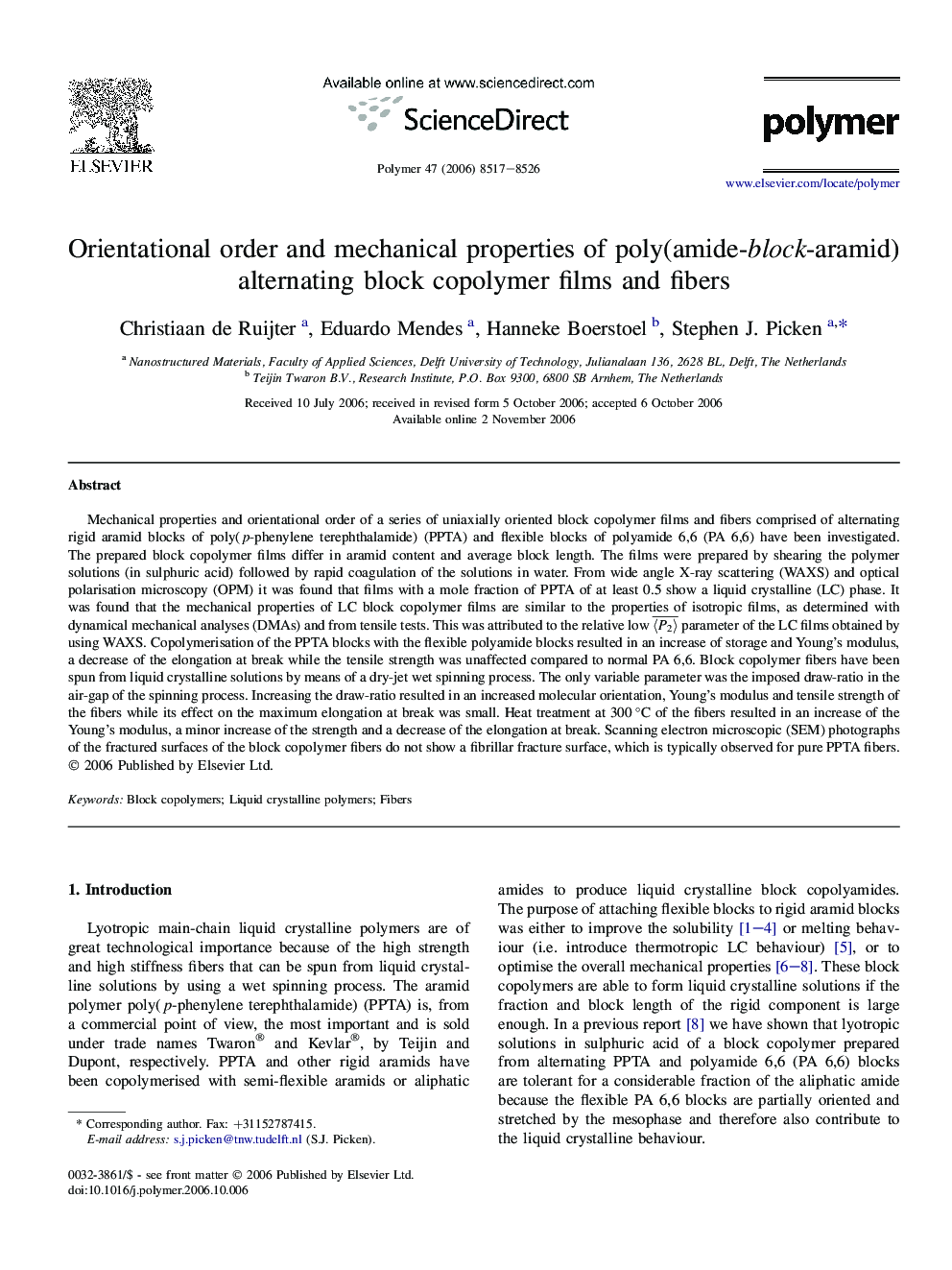| کد مقاله | کد نشریه | سال انتشار | مقاله انگلیسی | نسخه تمام متن |
|---|---|---|---|---|
| 5190532 | 1381208 | 2006 | 10 صفحه PDF | دانلود رایگان |
عنوان انگلیسی مقاله ISI
Orientational order and mechanical properties of poly(amide-block-aramid) alternating block copolymer films and fibers
دانلود مقاله + سفارش ترجمه
دانلود مقاله ISI انگلیسی
رایگان برای ایرانیان
کلمات کلیدی
موضوعات مرتبط
مهندسی و علوم پایه
شیمی
شیمی آلی
پیش نمایش صفحه اول مقاله

چکیده انگلیسی
Mechanical properties and orientational order of a series of uniaxially oriented block copolymer films and fibers comprised of alternating rigid aramid blocks of poly(p-phenylene terephthalamide) (PPTA) and flexible blocks of polyamide 6,6 (PA 6,6) have been investigated. The prepared block copolymer films differ in aramid content and average block length. The films were prepared by shearing the polymer solutions (in sulphuric acid) followed by rapid coagulation of the solutions in water. From wide angle X-ray scattering (WAXS) and optical polarisation microscopy (OPM) it was found that films with a mole fraction of PPTA of at least 0.5 show a liquid crystalline (LC) phase. It was found that the mechanical properties of LC block copolymer films are similar to the properties of isotropic films, as determined with dynamical mechanical analyses (DMAs) and from tensile tests. This was attributed to the relative low ãP2㯠parameter of the LC films obtained by using WAXS. Copolymerisation of the PPTA blocks with the flexible polyamide blocks resulted in an increase of storage and Young's modulus, a decrease of the elongation at break while the tensile strength was unaffected compared to normal PA 6,6. Block copolymer fibers have been spun from liquid crystalline solutions by means of a dry-jet wet spinning process. The only variable parameter was the imposed draw-ratio in the air-gap of the spinning process. Increasing the draw-ratio resulted in an increased molecular orientation, Young's modulus and tensile strength of the fibers while its effect on the maximum elongation at break was small. Heat treatment at 300 °C of the fibers resulted in an increase of the Young's modulus, a minor increase of the strength and a decrease of the elongation at break. Scanning electron microscopic (SEM) photographs of the fractured surfaces of the block copolymer fibers do not show a fibrillar fracture surface, which is typically observed for pure PPTA fibers.
ناشر
Database: Elsevier - ScienceDirect (ساینس دایرکت)
Journal: Polymer - Volume 47, Issue 26, 8 December 2006, Pages 8517-8526
Journal: Polymer - Volume 47, Issue 26, 8 December 2006, Pages 8517-8526
نویسندگان
Christiaan de Ruijter, Eduardo Mendes, Hanneke Boerstoel, Stephen J. Picken,